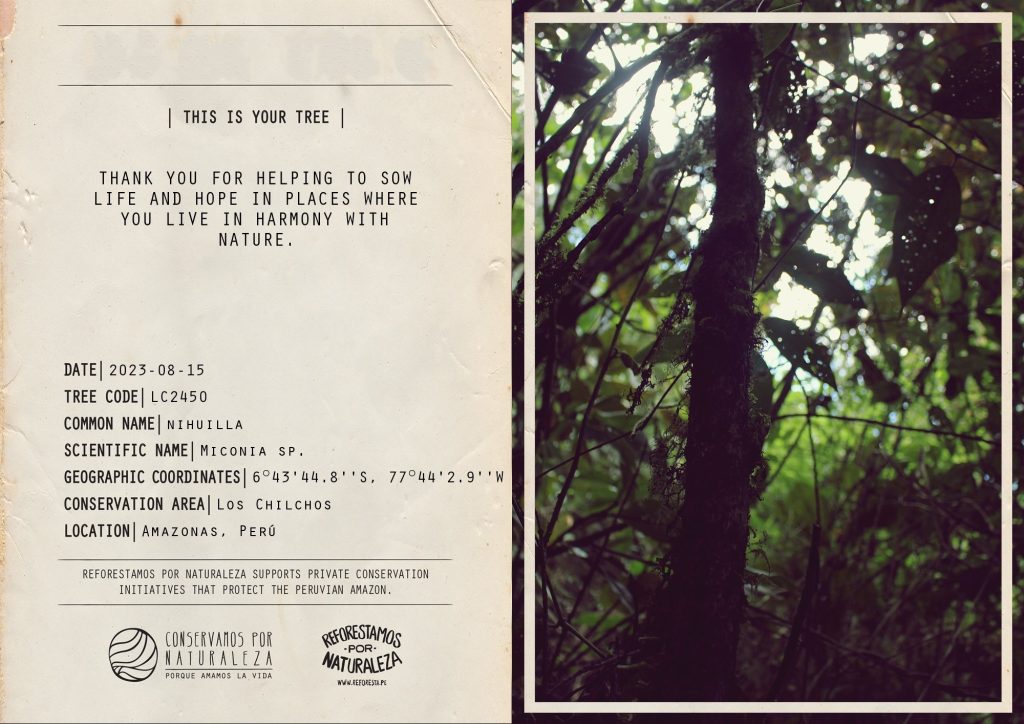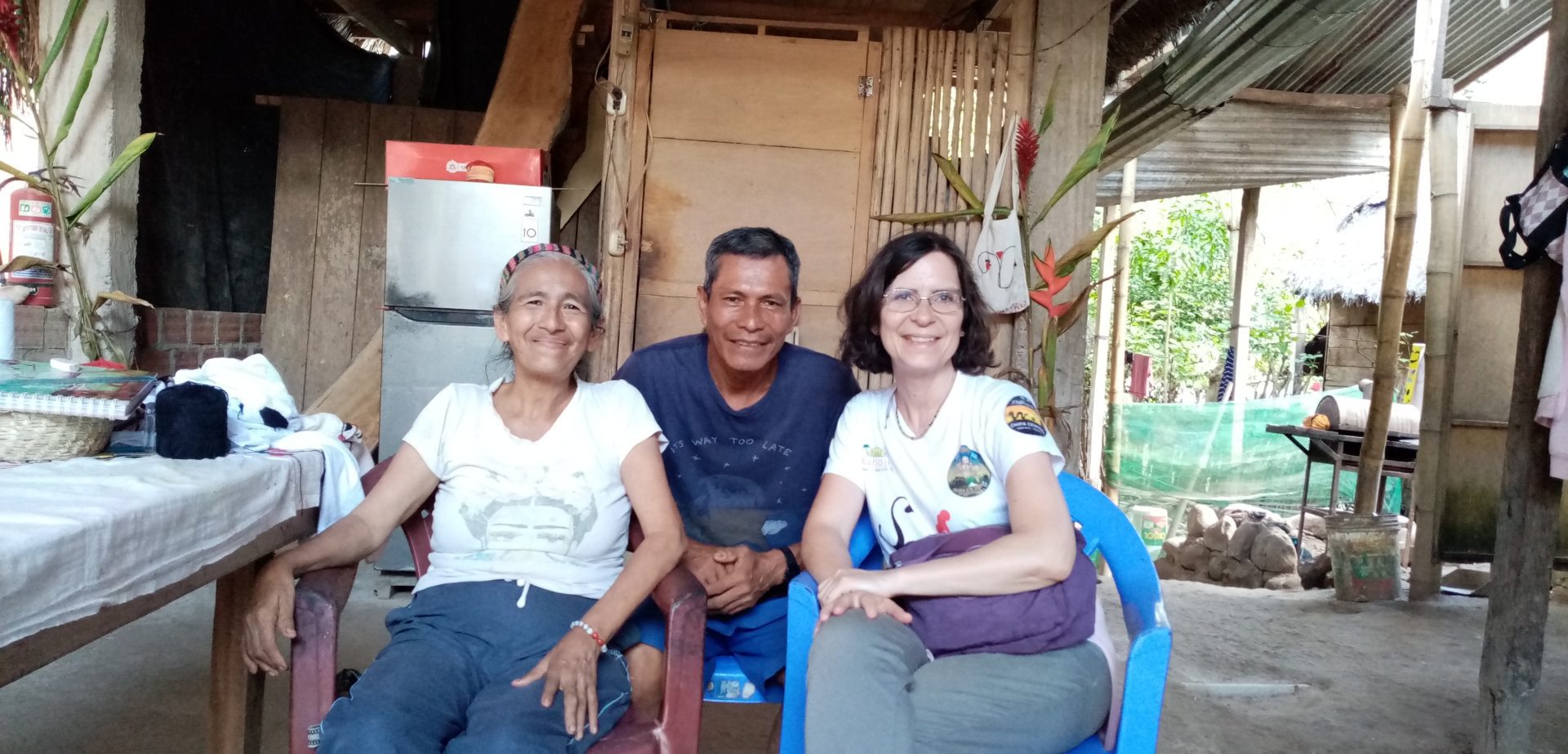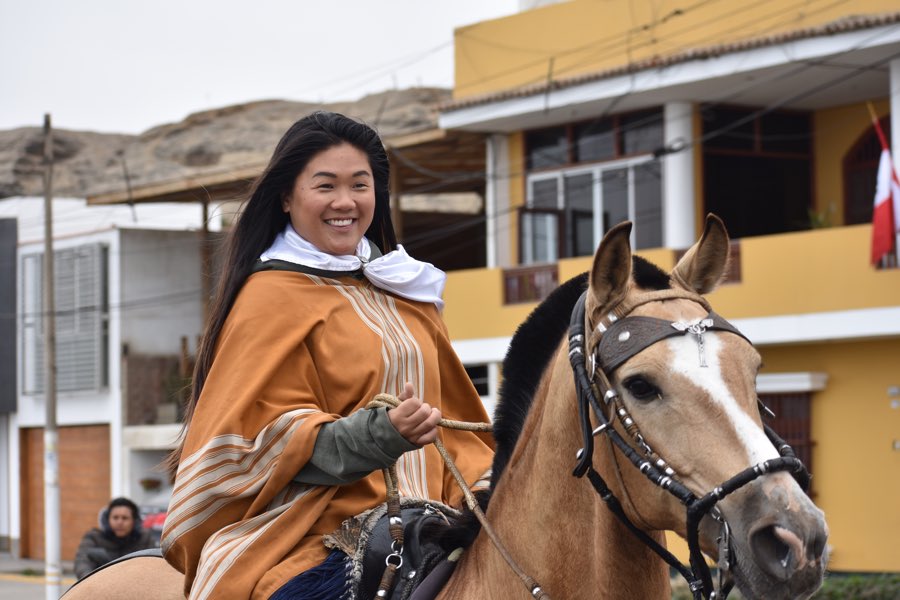Like every year, we are preparing a report of the actions taken in the previous year. This year, I am late with our sustainability or impact report. I think I am asking myself too many questions.
Between wanting to do well and finally realizing that we are not doing much, not enough, that we are not progressing as we want, and that the results are not visible – I have become discouraged.
The big question at the beginning of this year is “How to calculate my impact”? By the way, what impact are we talking about? Impact on the population in terms of education, in terms of income, so financially? Impact on the environment?
What are the foundations for our sustainability report?
In our 2022 impact report (covering the years 2020 and 2021), and our impact report for 2018 and 2019, we focused on the number of local partners we work with and the financial impact our clients were making on them. As a specialist for northern Peru, our mission is precisely to grow the impact of our trips in northern Peru (the south is therefore not included in the count).
Our important metrics are the number of partners and the revenues they can earn through their tourism engagement.
For 2023, here’s the breakdown:
We had a total of 72 travelers during the year 2023, but only 18 traveled to the north. At the same time, we had a total of 32 local partners (including 3 new ones following my trip to Peru in June 2023) that we count for impact. We worked with 20 of them by sending clients their way.
To write our impact report, we include:
- Rural entrepreneurs or associations that offer services or activities (such as Tingana near Moyobamba)
- Entry fees to archaeological sites or museums managed by the local tourism association (for example, the Karajia sarcophagi)
- Local guides or muleteers that we employ on-site
- Homestays (such as Casa de Dona Lola or with Sr. Jabier in Leymebamba)
With our current system of calculating impact, I arrive at an amount of 540 US$ for 2023, which translates to 30 US$ per traveler. It just feels negligible.
On the other hand, I see Impact Reports from other agencies that show 85% of the trip price staying in the country (the remaining 15% being the agency’s commission).
Of course, when traveling with Phima Voyages, at least 85% of the price of your trip stays in the country! Since we only work with local people, our hotels are small family-owned businesses. We also work always with the same drivers and guides. Obviously we pay entrance fees to the different sites. All this money stays on-site.
Have I started this report on the wrong footing back in 2018 ?
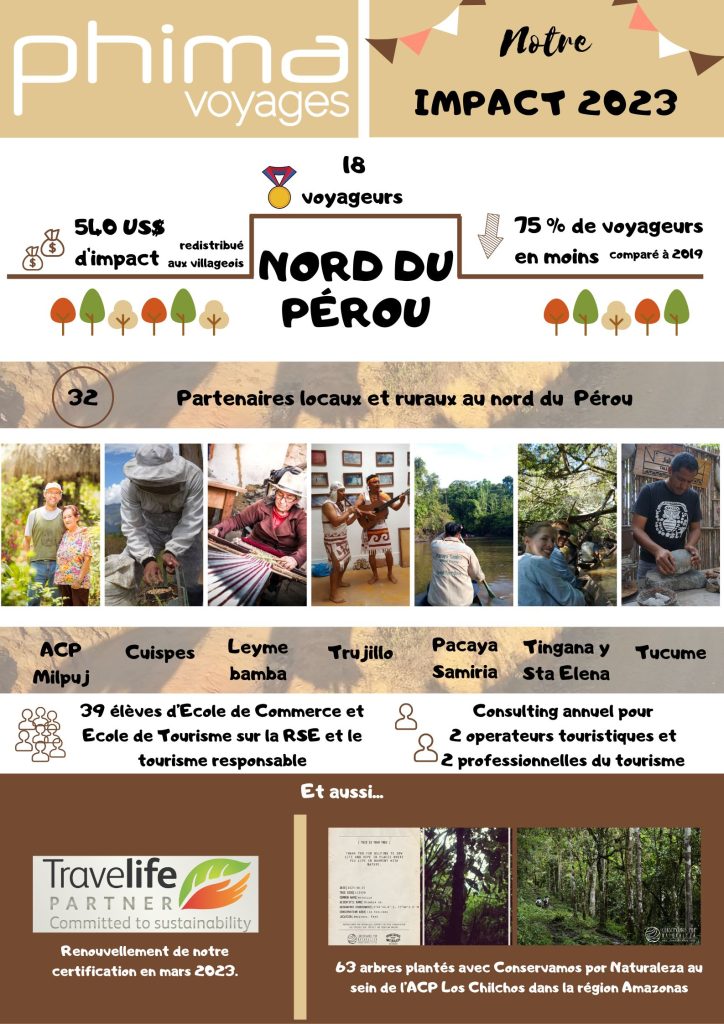
How to define what that should be included in the impact calculation? Questions…
A chain hotel – is this a positive impact? Should the room price be part of our financial impact in Peru? (There are Peruvian hotel chains, like Casa Andina, which are established throughout Peru. They generate jobs and also have a written and displayed responsibility policy). Until now, I did not count hotels in our report, only guesthouses, but for this 2023 report, I have many questions.
Payment for guides and drivers – is this a positive impact? Certainly, but it seems obvious to me to pay my guides and drivers; should this be part of my positive impact?
Entrance to an archaeological site managed by the Ministry of Culture, which takes all the revenue from the region to then redistribute it according to political questions – is this a positive impact? Not according to us, which is why there is a difference between entrance fees paid to local tourism associations and others.
Perhaps I should work on a new definition for our sustainability report, our impact report.
This is indeed what I have included in our action plan for this year 2024:
The redefinition of our basis for the impact and sustainability report.
Sustainable tourism relies on three pillars: economic, ecological, and social
9 years ago, in 2015 when we created Phima Voyages with a focus on responsible tourism, the world hardly talked about responsible tourism. Too often, the discussion is reduced to a single pillar of responsibility: carbon emissions!
Of course, a long-distance trip to Peru emits emissions, and we cannot deny that. This is precisely why we offer trips of 15 days to 3 weeks, to reduce the negative impact of emissions.
Once on-site, our understanding of sustainable tourism is mainly focused on our local partners. Phima Voyages’ mission since 2015 has been to involve Peruvians in the tourism development of their region. We want to provide them with additional income, and to showcase their culture and traditions.
For us, this means:
- Working with the local population through traditional activities.
- Offering homestays.
- Choosing family-owned hotels, preferably with an environmental approach.
- Training our drivers and guides in eco-responsible practices.
The notion of exchange is fundamental for us.
But let’s return to the accountability report.
The facts that are easy to name for this 2023 sustainability report:
As announced in 2022, we renewed our Travelife Partner certification in March 2023. Since then, we have followed our action plan and progressed on various subjects such as:
- Documents to be sent to our clients to inform them about Peru, responsible practices, things to do and not do.
- Sustainability policy.
- Creating a newsletter addressed to our partners on-site.
- Regular follow-up with various suppliers.
These different points seem easy to implement, but when they involve other suppliers, it becomes difficult. It is really not easy to explain to our local partners the importance of animal welfare or the use of an employment contract, as culturally it is not common…
Trainings provided for professionals in Peru…
Under our training role, I provided 80 hours of training in 2023 to four people in Peru, including a local tourism operator.
And for future professionals in France…
After teaching in 2022 at IDRAC in Lyon, I taught CSR and Time and Work Management at the Tunon School in Marseille in 2023. I also returned to IDRAC in December 2023. This time for a special course on transforming tourism companies from sustainability to regeneration.
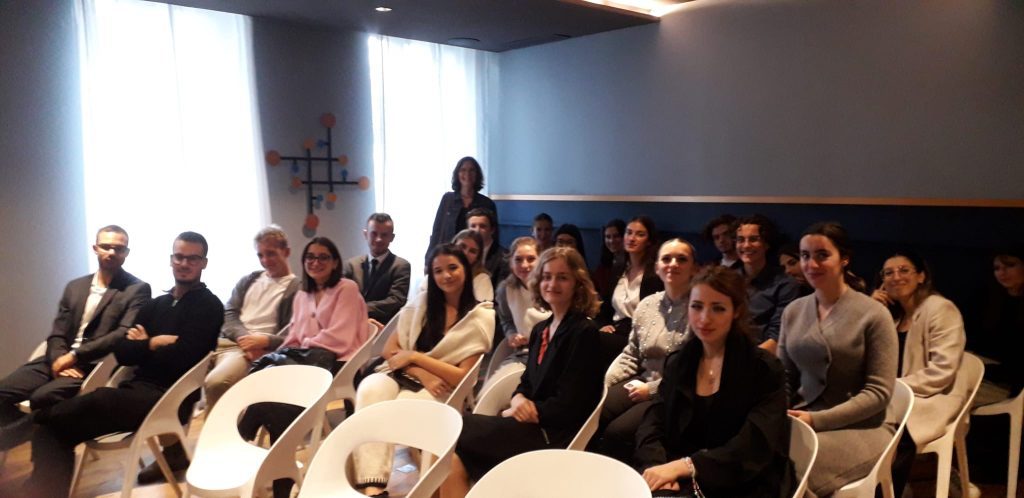
Reforestation
Since 2022, we have been collaborating with Conservamos por Naturaleza on reforestation efforts. Every traveler with Phima Voyages contributes to reforestation in northern Peru! In 2023, our clients adopted 65 trees at the Los Chilchos Private Conservation Area (ACP Los Chilchos) in the Amazonas region. This region is where our agency is located.
